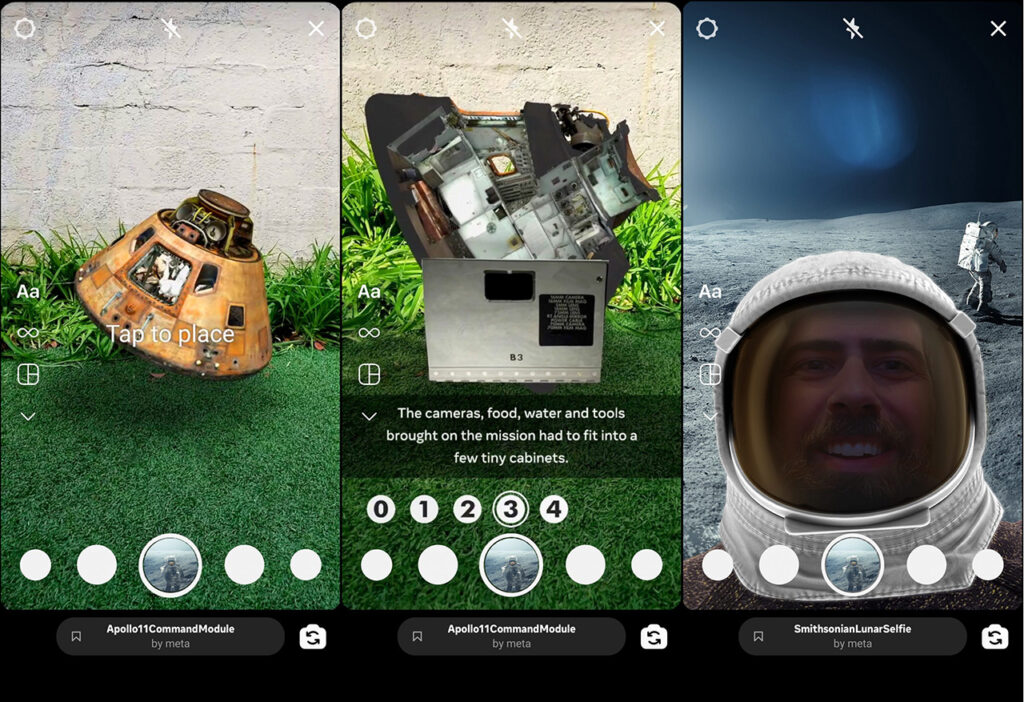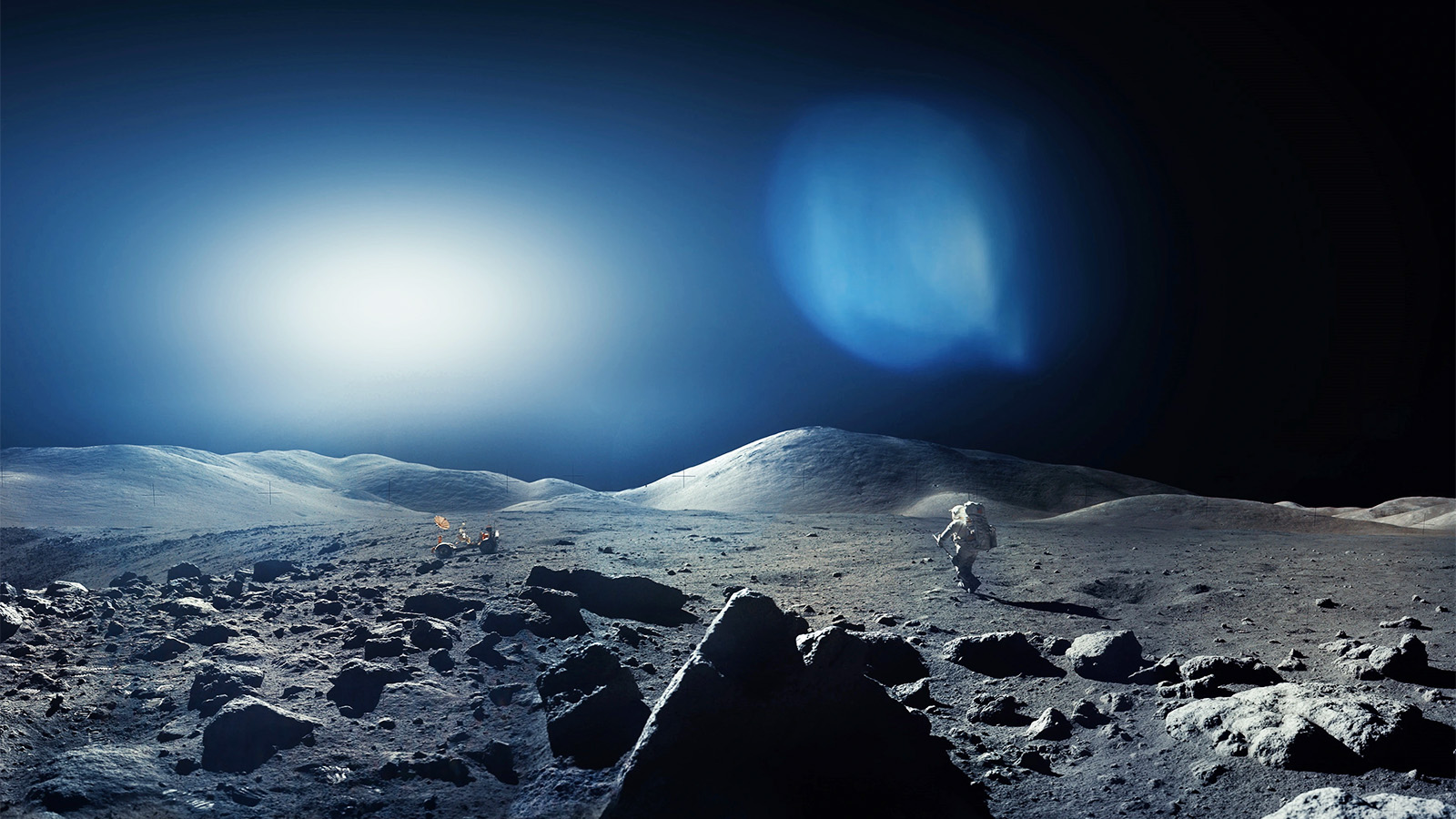In late 2021, the Smithsonian debuted its FUTURES exhibition to mark its 175th year. Designed to host tech-inspired installations that capture and reflect futuristic landscapes, the long-running exhibition at the Arts and Industries Building now has a new VR experience, FUTURES x Meta: Moonwalk.
Created in partnership with Meta, storytelling agency Meridian Treehouse, VR production company Black Dot Films, and brand experience agency Sparks, Moonwalk will debut on May 4, just in time for the 50th anniversary of NASA’s Apollo program.
What happened

The VR experience was created with researchers and filmmakers who used cutting-edge photogrammetry to stitch together more than 7,000 rarely-seen archival images taken by NASA missions. Image: Courtesy Meta Immersive Learning, produced by Black Dot Films VR © 2022 Black Dot Films, LLC
Moonwalk brings visitors to the moon’s surface, immersing them in an environment that has been constructed using 7,000-plus archival images of the moon, 3D collection scans, NASA mission recordings, along with other materials inspired the real-life experiences of real-life Apollo astronauts.
Via a Meta Quest 2 VR headset, Moonwalk recreates the moment astronauts experienced when they landed on the moon, while looking out the Apollo 11 landing capsule. During the experience, visitors can “kick” moon dust, observe a lunar rover, listen to conversations between the Apollo astronauts, and observe life on the moon. Additionally, the Smithsonian and Meta will also release custom Instagram AR filter effects to allow users to take “lunar selfies” with an astronaut in space.
Why it matters

Accompanying Moonwalk are a host of Instagram AR filters that allow users to “place” Apollo equipment within their own environments and snap a “lunar selfie.” Images: Courtesy Meta Immersive Learning
Meta has a long history of supporting the arts and culture space through its Meta Open Arts program, previously known as Facebook Open Arts. The tech company has lent its expertise to projects such as the Instagram-based The ARt of My Roots, the AR experience built around a Michelle Kumata mural at Bellevue Arts Museum, and the Magical Reflections digital experience for Alte Nationalgalerie. With each outing, Meta has deepened its involvement in the cultural space by expanding the possibilities of how cultural organizations can build tech-forwardness into their programs.
With its rebrand from Facebook, it’s natural that Meta is now eyeing educational opportunities within the metaverse and virtual environments, particularly through its Meta Immersive Learning initiative, in which Meta has reportedly invested $150 million. Subsequently, Moonwalk is just one example of how the metaverse could be utilized for in-person and remote museum educational programs, in line with initiatives like the Museum of Science’s Destination Mars: The New Frontier program, created in partnership with Roblox, which simulates life on Mars for young players.
Why they said
“Partnering with the Smithsonian’s Arts and Industries Building allows us to showcase how immersive technology can transform the way we learn by exploring simulated environments. Through a combination of in-person, virtual, and immersive experiences in the metaverse, we can increase access to education and help build a more connected and curious world.” — Monica Arés, Head of Immersive Learning, Meta
“It’s so exciting that more than 50 years later, we are able, through this collaboration with Meta, to give visitors a new groundbreaking experience of moon travel. Experiencing Moonwalk is going to ignite future dreams of adventure and space travel in our next generation of budding scientists and space explorers.” — Rachel Goslins, Director, Smithsonian Arts and Industries Building



